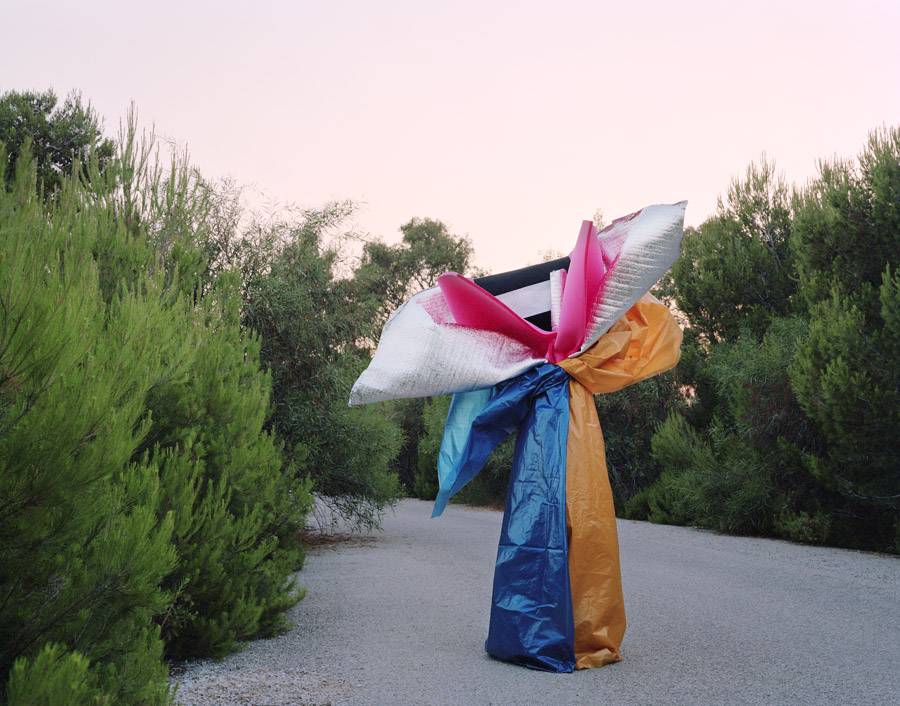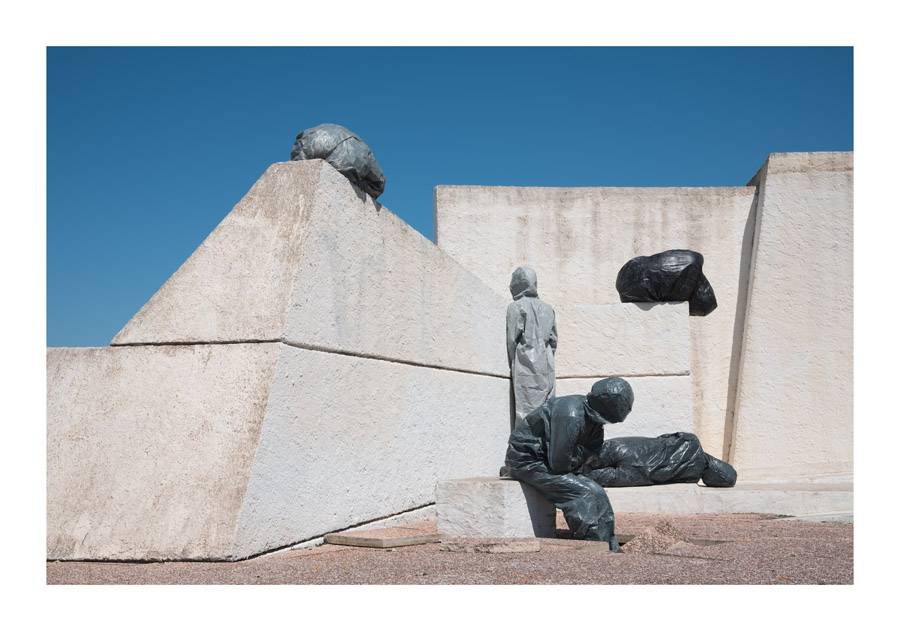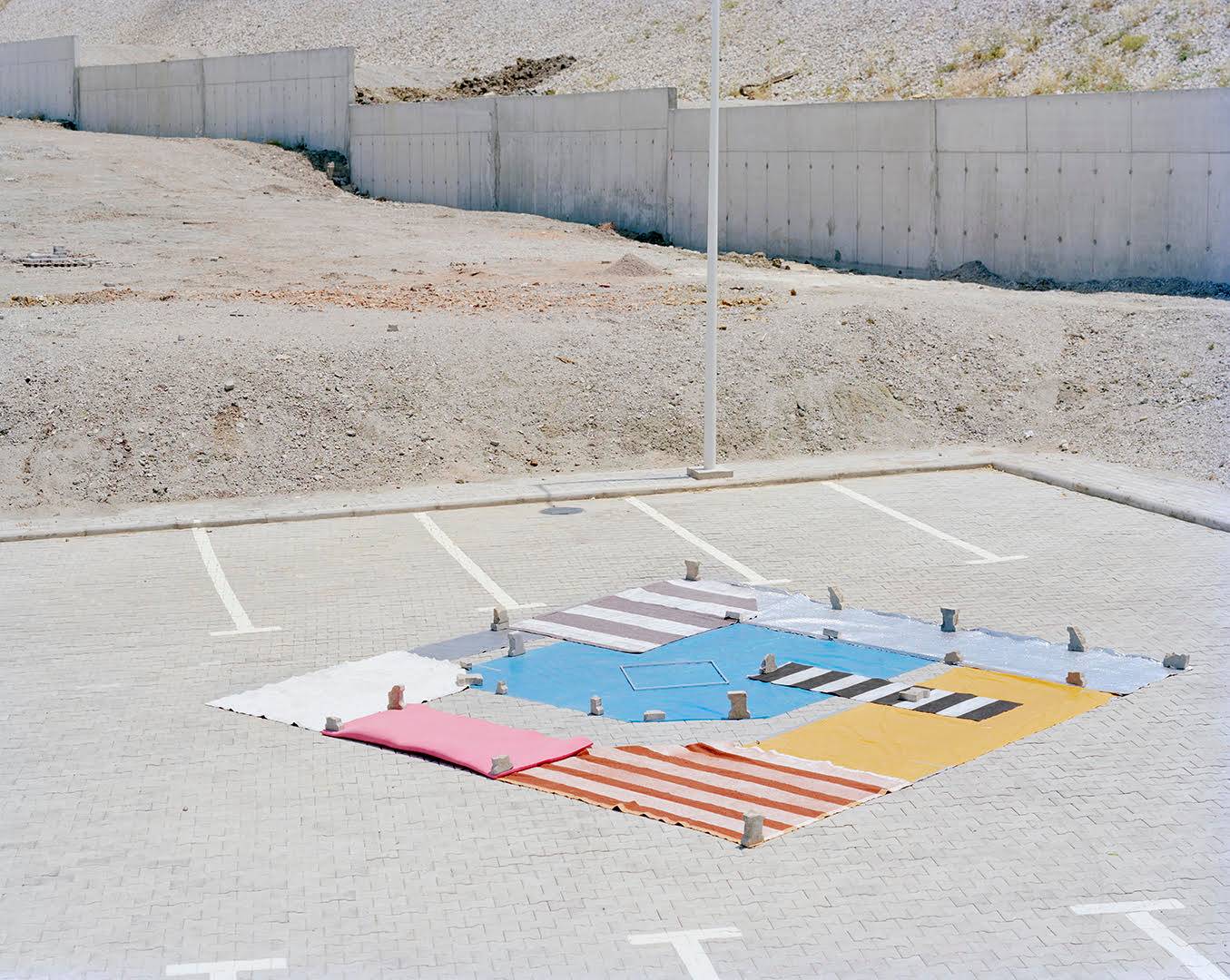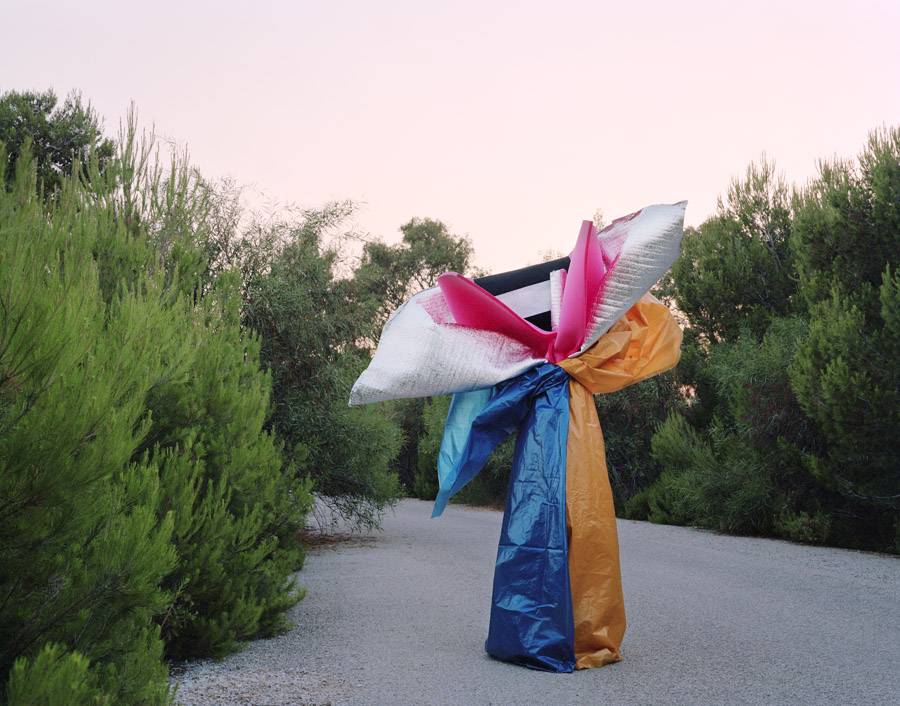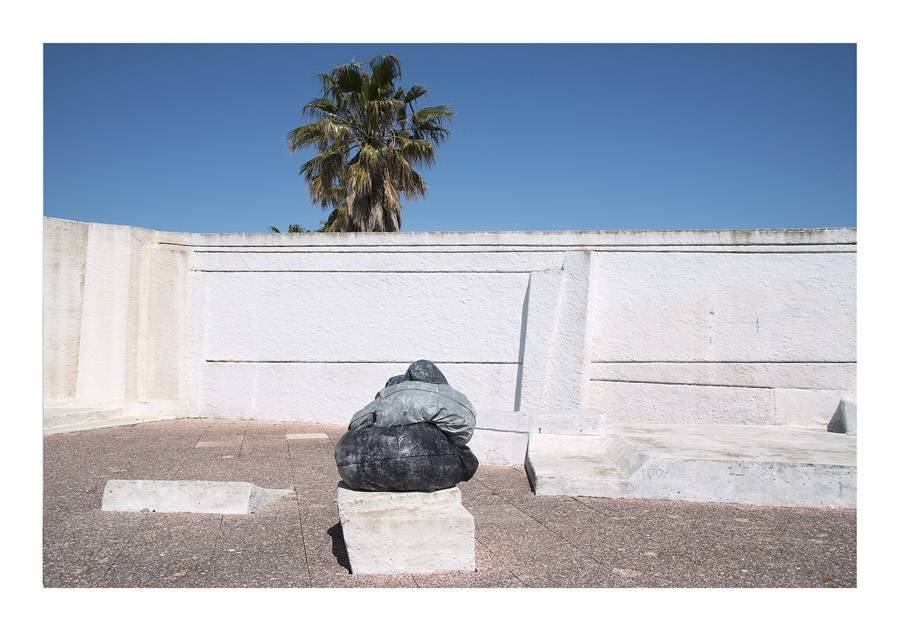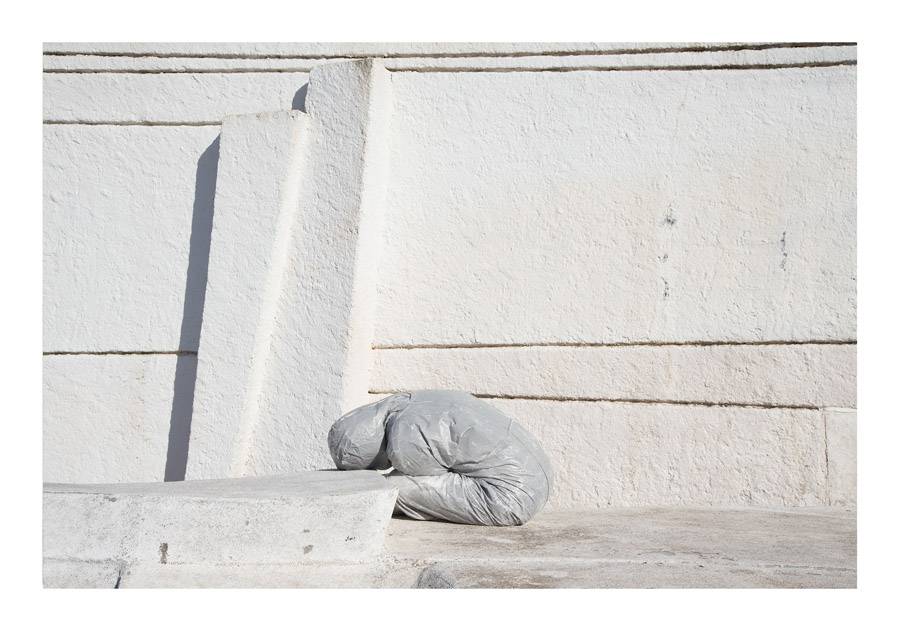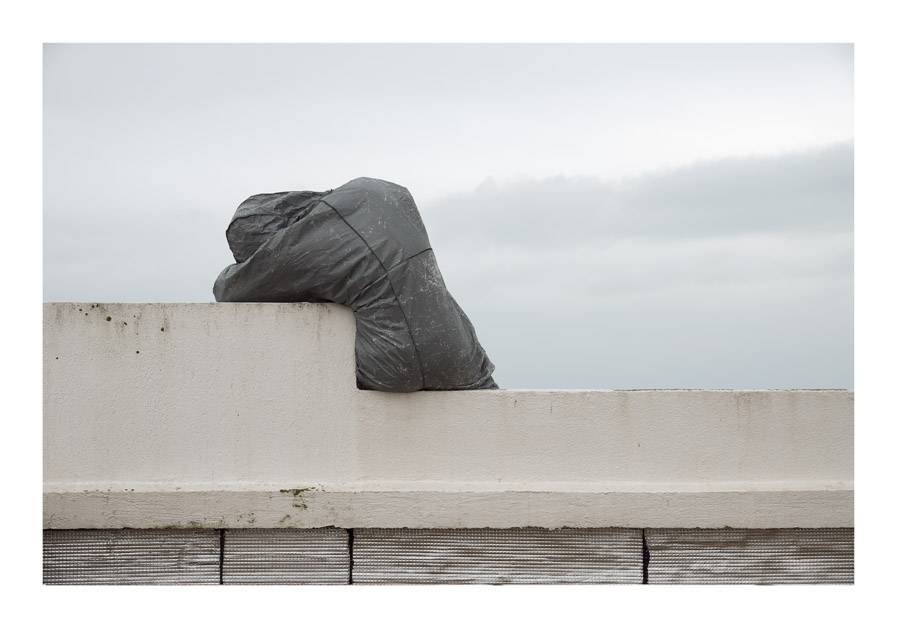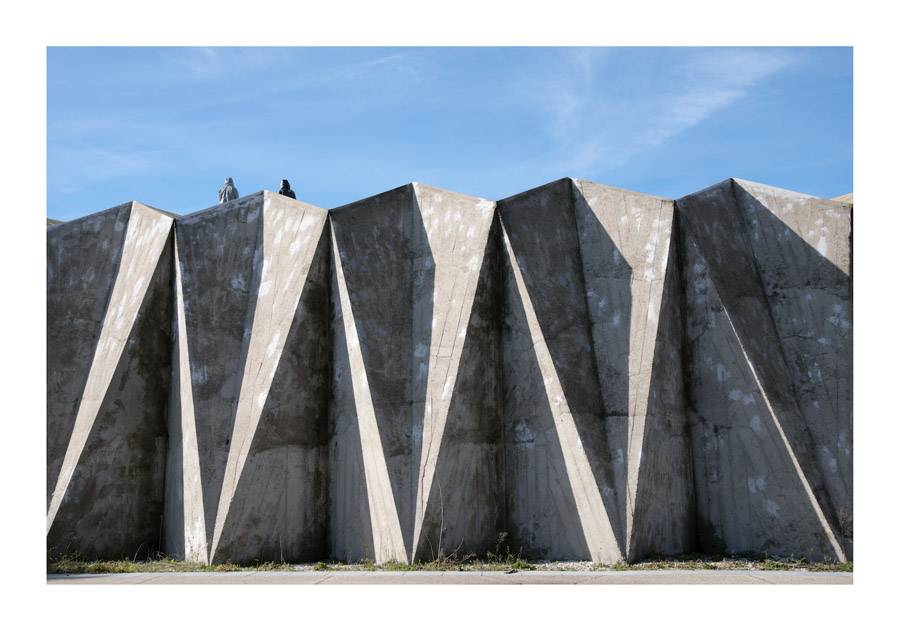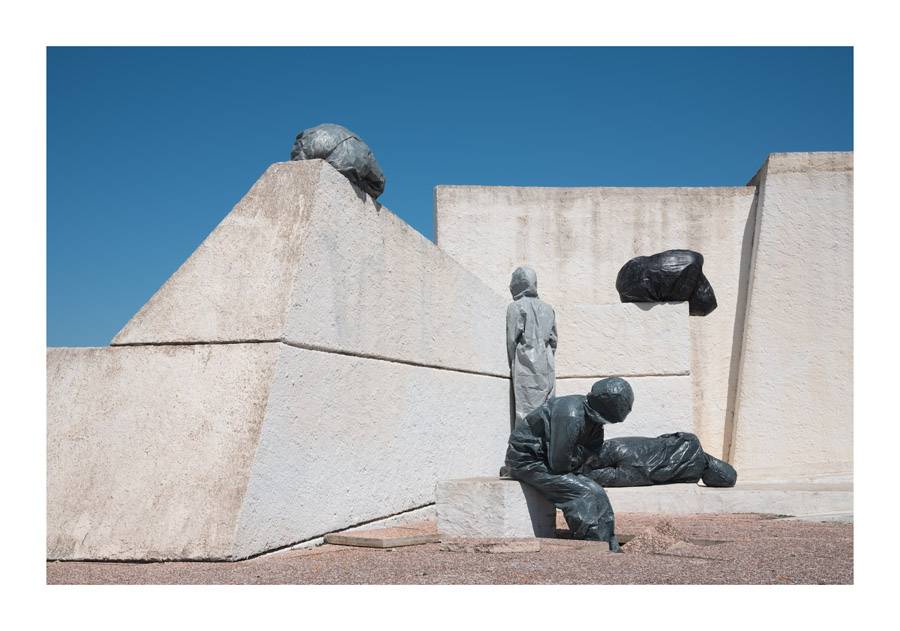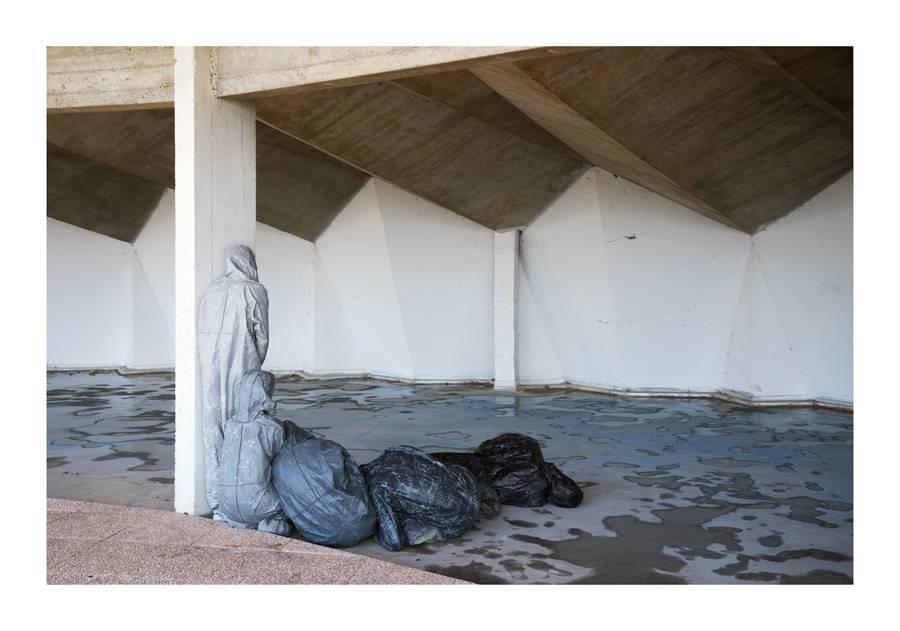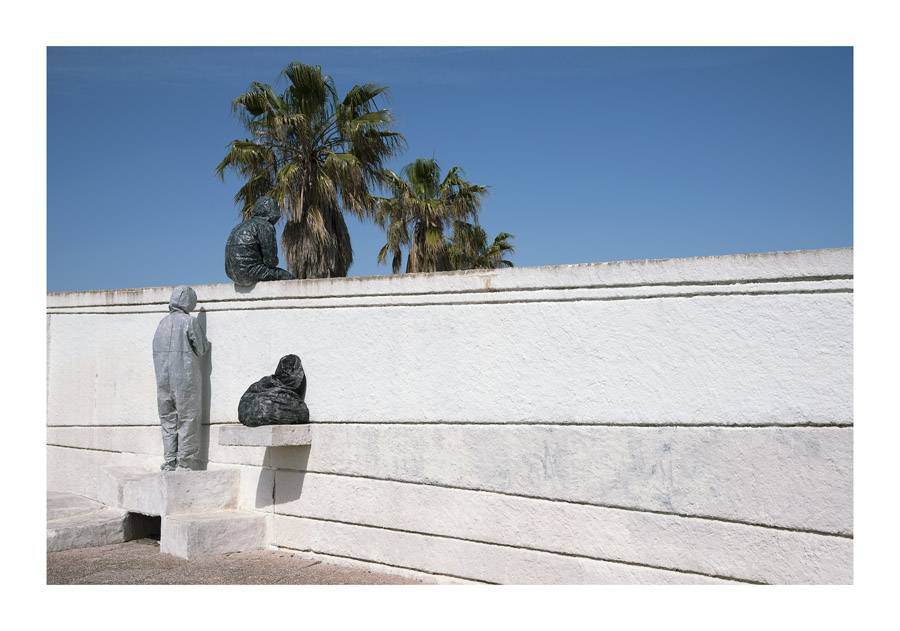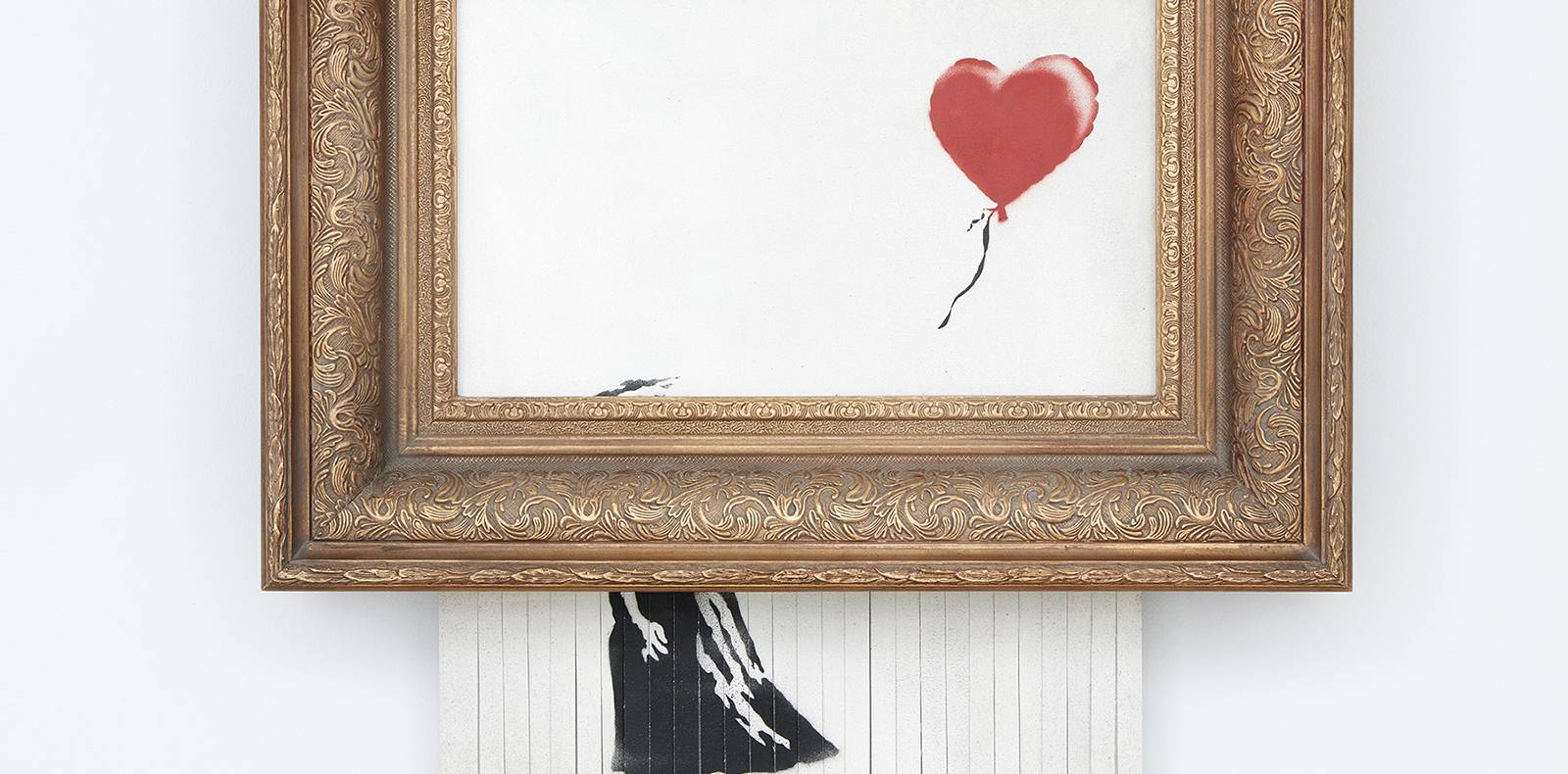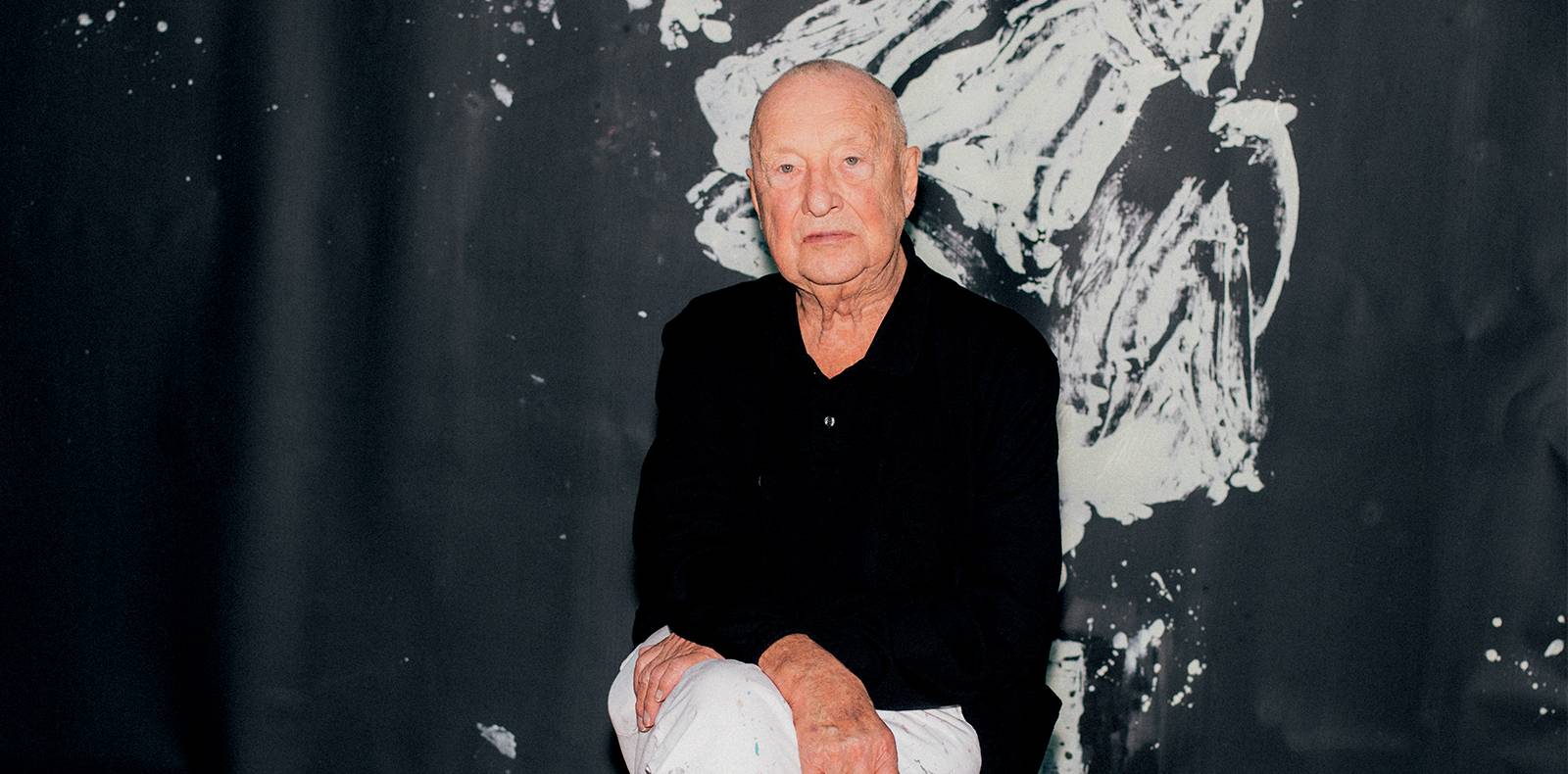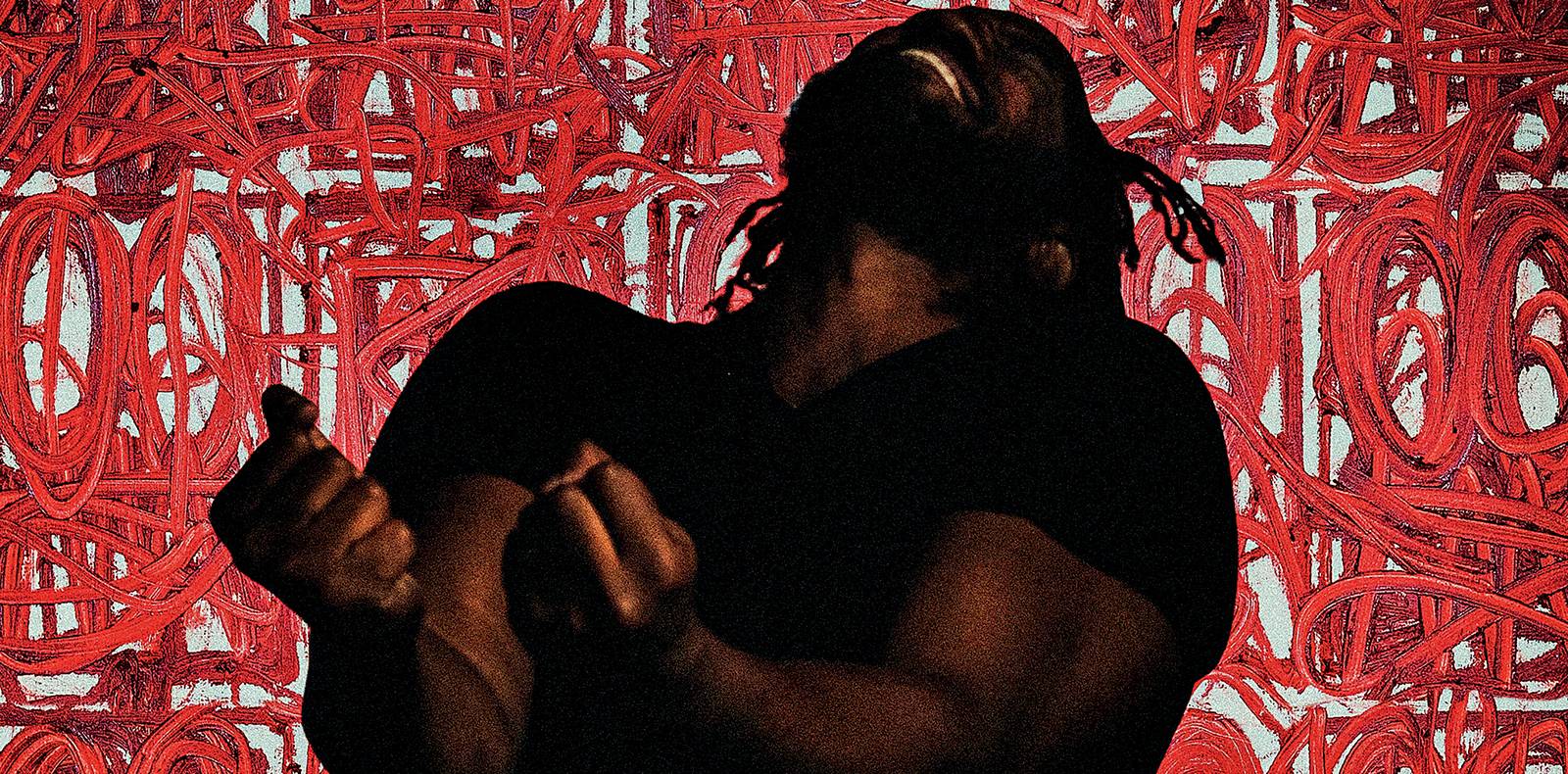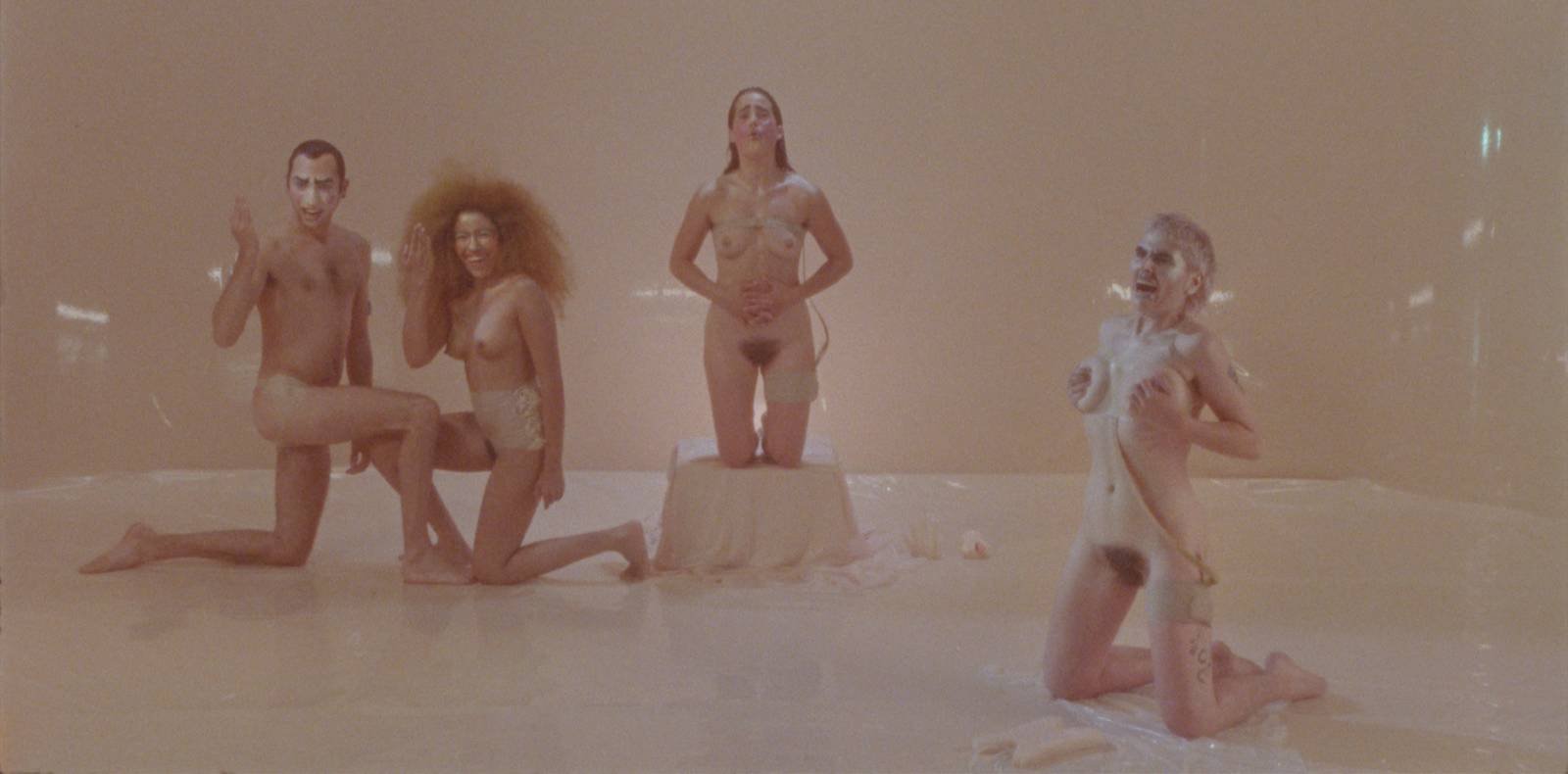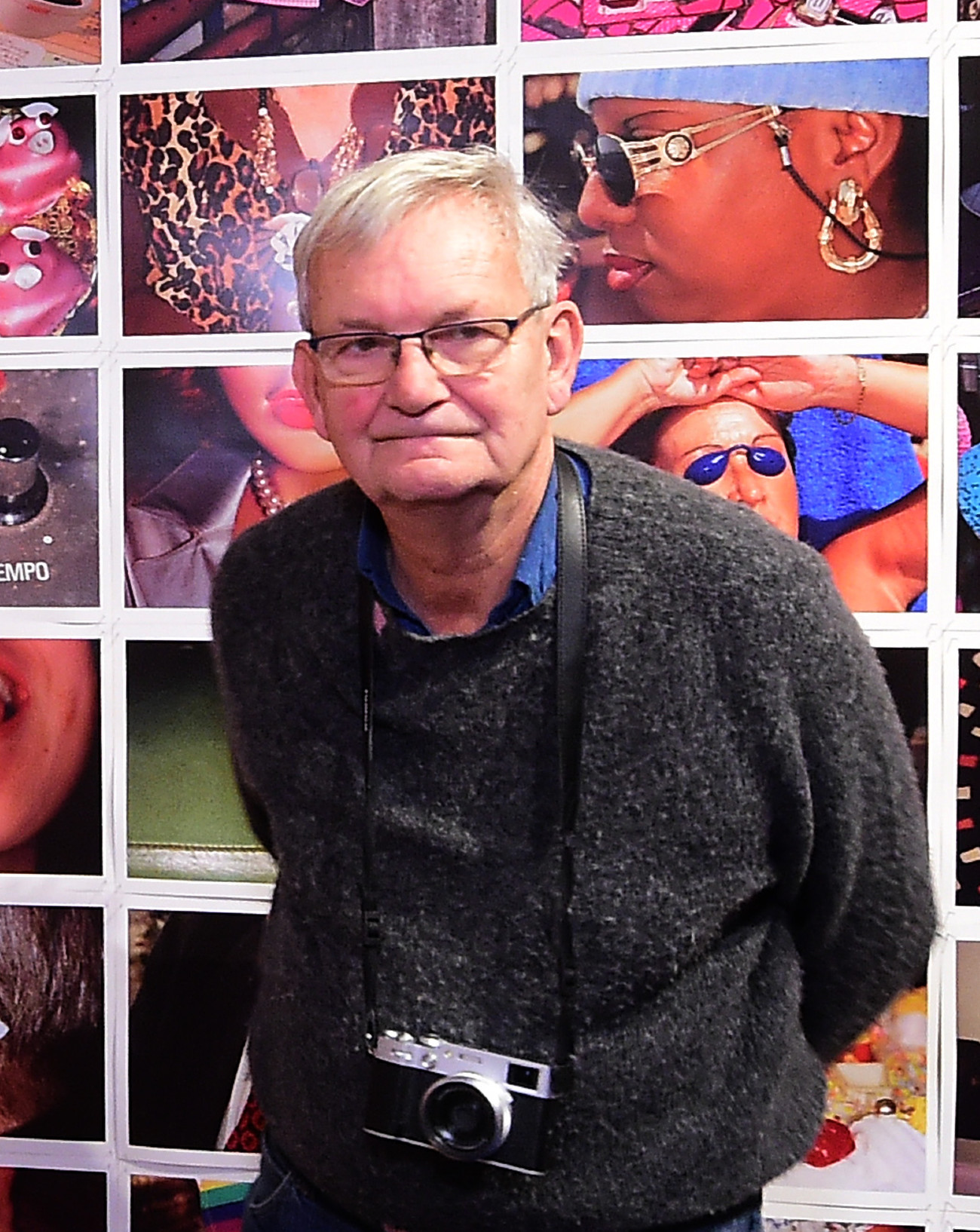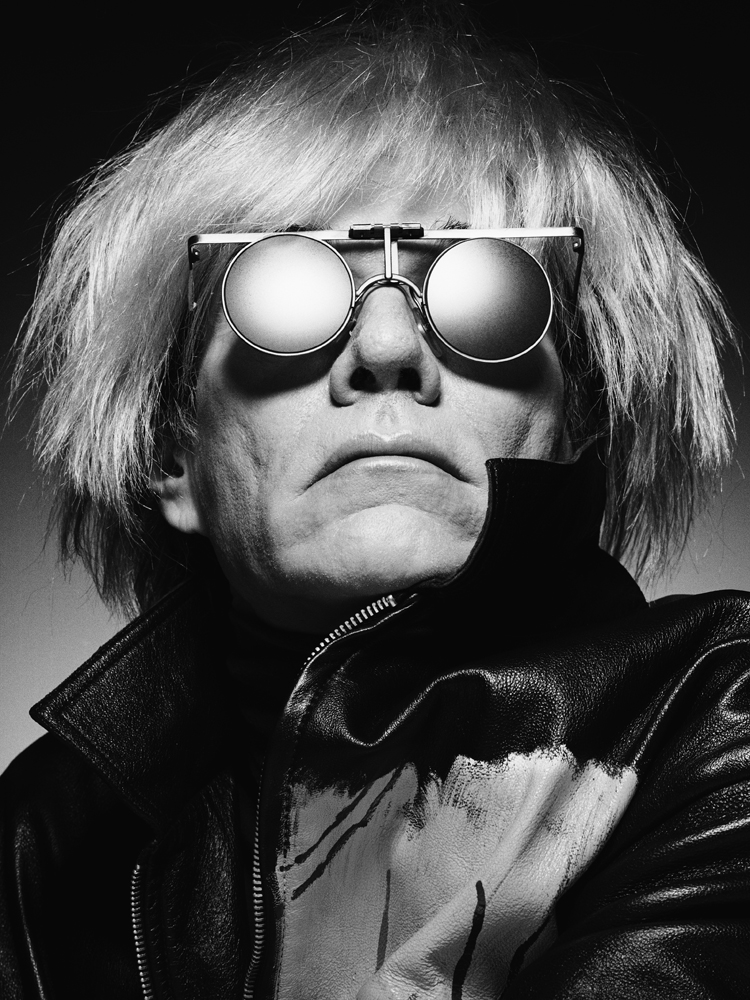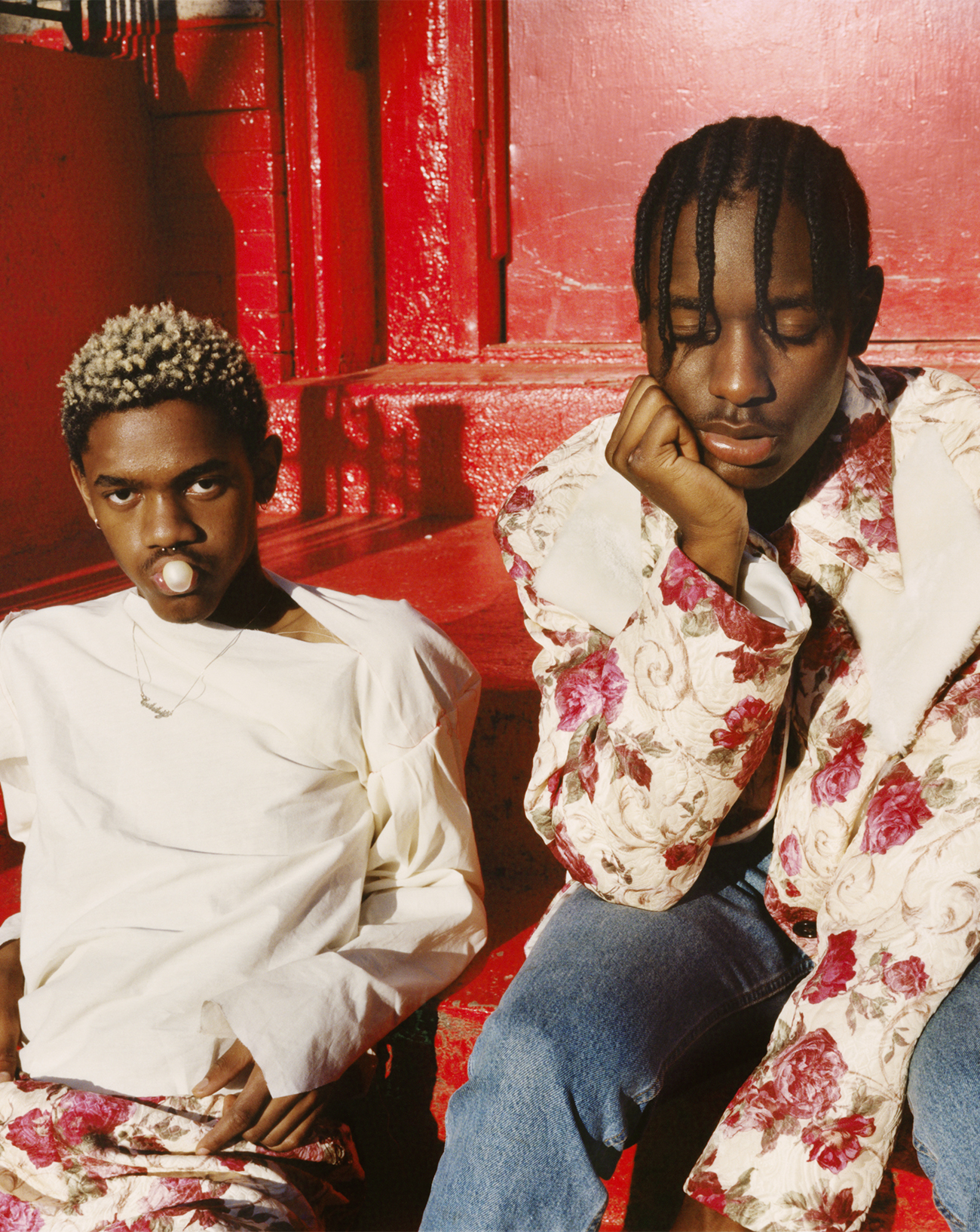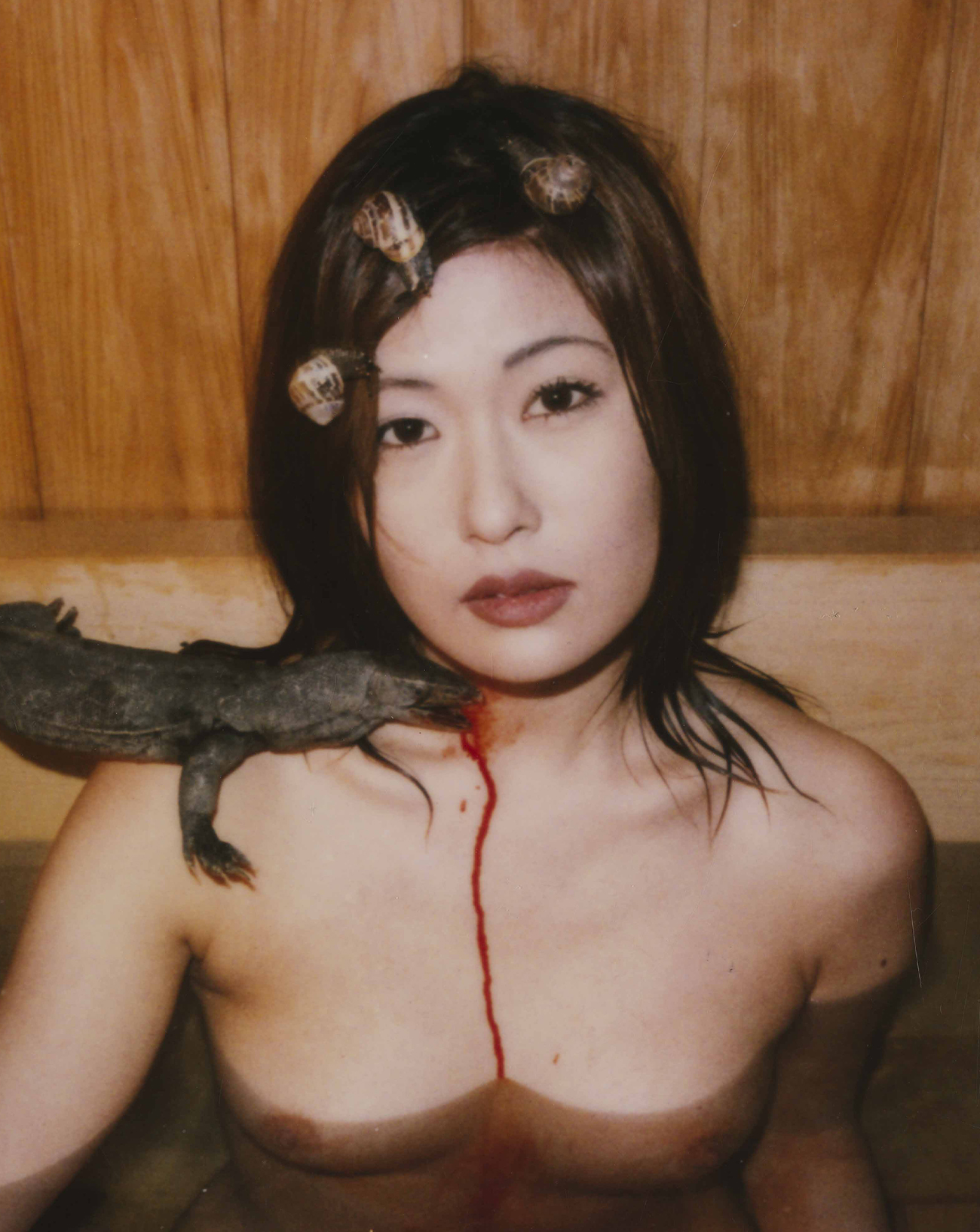
27

27
Hyères Festival: who are the winners of the Jury Prize for Photography?
In Hyères this year, a duo of artists from the south of France, Emma Charrin and Olivier Muller, won the Grand Prix from the photography jury, chaired by Dominique Issermann. For Numéro, the winners spoke of their fascination with changing seaside territories, their taste for chimeras and their desire to capture the ephemeral nature of all things.
Published on 27 October 2021. Updated on 10 March 2025.
From the heights of the Villa Noailles in Hyères , the deep blue of the Mediterranean Sea glistens through the openings in this concrete edifice, a jewel of modern architecture. Within the exhibition space, as a nod to what is already taking place outside, photographs by Emma Charrin and Olivier Muller also evoke this contrast, and all the poetry it evokes. Their exploration of the Mediterranean coastline and their fascination with seaside resorts, both integral elements of their photographic work, could not go unnoticed in such a context. Awarded the highest distinction in their category at the 36th edition of the International Festival of Fashion, Photography and Accessories, Emma Charrin and Olivier Muller spoke to Numéro about the sources of their inspiration and the origins of their collaboration.
Emma Charrin, 34, and Olivier Muller, 36 , form a longstanding creative duo. They met just over ten years ago at university in Aix-en-Provence, and both enrolled at the École des Beaux-Arts de Marseille in 2010, where the beginnings of their artistic collaboration were born. She studied photography, he studied plastic expression and performance art. What binds them together is their deep attachment to the Mediterranean coast, its architecture and its changes. In 2015, they embarked on a long-term project entitled Des Rives – Provisoire, presented at the Hyères Festival, which led them to explore various territories around the Mediterranean, from La Grande-Motte to Tangier. There, they stage theaters where bodies and installations mingle and, at the same time, clash with architecture and nature. They invent rituals, like this “ode to the morning dew” in the non-urbanized areas on the outskirts of Tangier, where land art acquires a spiritual dimension : “Tangier,” explains Olivier Mulleris a city that has developed very rapidly over the last twenty years. When we explored its outskirts, we discovered these areas of countryside that seemed to be on borrowed time. We installed land art installations, similar to protective amulets, before the city came to devour these spaces…“These amulets, made from building site materials related to the world of construction and public works, herald the forthcoming urbanization of the site, while reinvesting it – perhaps one last time – with a poetic, dreamlike breath of fresh air.
Whether in Tangier, Marseilles or La Grande-Motte, the duo are interested in the concrete transformation of sand, the opposition between brutalist architecture and the unstable fragility of natural landscapes. In a back-and-forth between performance and photography, they fix and freeze the impermanence of things and their metamorphoses, while reinjecting movement into the rigidity of concrete blocks. Both have what they call “the melancholy of the seaside“, a feeling of fascination tinged with sadness for changing coastal territories, which they set out to translate in the first chapter of Des Rives – Provisoire, “Le Tropique du Yucca”, in La Grande-Motte. In these images, the anonymous bodies of dancers, as if imprisoned in painted plastic sheeting, contrast roundness and softness with the angular lines of the Point Zéro building, an emblematic example of Jean Balladur’s architecture, set against the 5-metre-high dune that inspired the name “La Grande-Motte”. It was this series of photographs that particularly appealed to Dominique Issermann, president of the photo jury for the 36th edition of the Hyères Festival. The fashion photographer and long-time Numéro contributor, recently elected to the Académie des Beaux-Arts, explains that she was blown away by this series, which “shows no face, no emotion, and does not encourage us to immerse ourselves in the contemplation or wonder of enigmatic beauty“. What she saw there was “a theater, where a drama is played out, perhaps, or at least tensions ; theatricality of the setting, with its characters installed, as if waiting to be transported to another world.” That’s what it’s all about: dramatizing, “fictionalizingTo use the duo’s expression, “to create” popular and globalized territories, to threaten the standardization of the landscape by introducing mystery and chimera.
For each chapter of their Des Rives – Provisoire project, Emma Charrin and Olivier Muller proceed in two stages. It all begins with extensive research – both documentary (archives, testimonials) and artistic – into the space they have chosen to invest in, which serves as their driving force and source of inspiration. Although traces of this documentation remain in the final result, it is not intended to be descriptive. On the contrary, through their staging work (the second stage of their creation), they aim to transform the territory into a setting, to rewrite it in the manner of a tale or myth. A gesture that Dominique Issermann interprets as “.a final effort to choreograph at all costs, in a staging that attempts to control the passage by boat to the new world, on the shores of the Mediterranean (…), moving away from tragedy into the brutalism of ecological protest.“.
The modern, concrete setting of the Villa Noailles, where their images are exhibited, seems to have been made for them. On the day of our visit, an impromptu rainbow crossed one of the photographs in the Baltellala series , where lines and colors were already superimposed, as if to underline its phantasmagorical character. For the duo, Hyères is a dream come true : “It’s funny because when we were doing the photos at La Grande-Motte, we were already thinking of a possible dialogue between the brutalism of Point Zéro and the architecture of Robert Mallet-Stevens [l’architecte de la Villa Noailles], which also drives us a great deal. We thought the Villa would be an appropriate and relevant venue for this series, so we’re really happy to be here today.“. Winners of the Grand Prix du Jury de la Photographie, the duo have been awarded a €20,000 grant, which will enable them to complete the fourth chapter of the Des Rives – Provisoire project in the best possible conditions.It will be a kind of mockumentary, set either in Italy or Greece – we don’t know yet. What’s certain is that we’ll continue to work on the Mediterranean coast because it’s a region that’s very close to our hearts.“In the meantime, their work and that of the other finalists in the 36th edition of the Festival de Hyères can be seen at the Villa Noailles until November 28, 2021.
Exhibition of finalists Photography, Villa Noailles, Hyères, until November 28, 2021.
